Ganancia trimestral de Exxon se desploma un 63 pct
HOUSTON (Reuters) - Exxon Mobil Corp, el mayor productor de petróleo del mundo que cotiza en bolsa, reportó el viernes una caída de 63 por ciento en sus ganancias del primer trimestre, debido a la caída del precio del crudo y a débiles márgenes de refino.
La compañía informó una utilidad neta de 1.810 millones de dólares, o 43 centavos por acción, en comparación con los 4.940 millones de dólares, o 1,17 dólar por acción, del mismo período del año anterior.
La producción aumentó un 2 por ciento a 4,3 millones de barriles de petróleo equivalente por día.
Viernes 29/04/16 PMI de Chicago
45 mensajes
• Página 2 de 3 • 1, 2, 3
Re: Viernes 29/04/16 PMI de Chicago
El ingreso personal subió 0.4%
- admin
- Site Admin
- Mensajes: 165587
- Registrado: Mié Abr 21, 2010 9:02 pm
Re: Viernes 29/04/16 PMI de Chicago
Europa creció 0.6%
- admin
- Site Admin
- Mensajes: 165587
- Registrado: Mié Abr 21, 2010 9:02 pm
Re: Viernes 29/04/16 PMI de Chicago
El dólar se debilita.
- admin
- Site Admin
- Mensajes: 165587
- Registrado: Mié Abr 21, 2010 9:02 pm
Re: Viernes 29/04/16 PMI de Chicago
Los gráficos del día, 
.

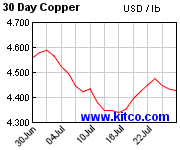
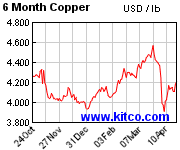

.

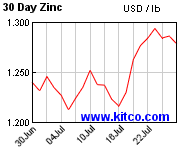
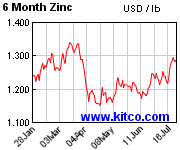
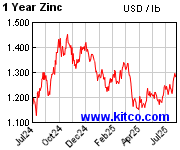
.

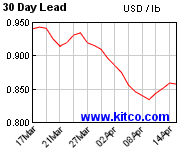
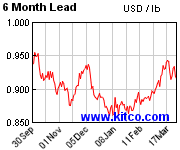
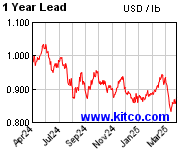
.
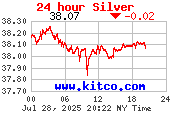
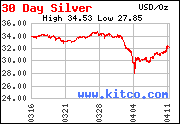

.
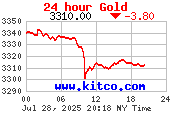


.
.




.




.




.



.



.
- Comodoro
- Mensajes: 980
- Registrado: Jue May 06, 2010 8:24 am
- Ubicación: LIMA
Re: Viernes 29/04/16 PMI de Chicago
Metales: a grandes caídas, grandes rebotes 
- jonibol
- Mensajes: 2878
- Registrado: Mar Abr 27, 2010 9:51 am
Re: Viernes 29/04/16 PMI de Chicago
Dow falls 100 points after data; euro, yen strength in focus
Evelyn Cheng | @chengevelyn
18 Mins Ago
CNBC.com
Traders work on the floor of the New York Stock Exchange.
Brendan McDermid | Reuters
Traders work on the floor of the New York Stock Exchange.
U.S. stocks traded more than half a percent lower Friday, the last trading day of the month, as investors eyed earnings, data and currency moves.
The Dow Jones industrial average fell more than 100 points in morning trade with UnitedHealth contributing the most to declines. Exxon Mobil was among the few advancers.
Chicago PMI for April was 50.4, below expectations of 53.0 and March's 53.6 print.
The final April read on consumer sentiment was 89.0.
Batman
Short seller Gotham City targets MDC Partners, sees $1 value
The U.S. dollar index was more than half a percent lower, with the euro near $1.144. Earlier, the euro hit its highest against the dollar since April 12 and the dollar index fell to its lowest since Aug. 24, 2015.
The Japanese yen strengthened to fresh highs against the U.S. dollar, going back to October 2014, and was near 107.3 yen against the greenback as of 10:27 a.m. ET.
"The biggest surprise of the week was the Bank of Japan. We're still feeling the aftershocks of that," said Art Hogan, chief market strategist at Wunderlich Securities.
As of mid-morning trade Friday, the Dow and S&P 500 were on pace for slight gains for the month, while the Nasdaq composite was tracking for a loss of more than 1.5 percent. The major averages were on pace for a weekly decline of more than 1 percent.
Read MoreEarly movers: AMZN, VRX, TIVO, TYC, DAL, VFC, MCO, NWL & more
The Nasdaq composite briefly attempted gains, helped by Amazon.com. Shares briefly rose 11 percent in opening trade before holding about 10 percent higher.
Amazon.com reported earnings well above expectations on both the top and bottom line, helped by growth in its Amazon Web Services business. First-quarter earnings of $1.07 a share on $29.13 billion in revenue compares with last year's loss of 12 cents a share and $22.72 billion in sales.
LinkedIn's results also soared past expectations and the firm raised its full-year outlook.
Chevron posted a greater-than-expected loss of 39 cents a share, while revenue beat expectations at $23.55 billion. That marked a roughly 32 percent decline in sales from the comparable year-ago figure of $34.56 billion.
Exxon Mobil reported quarterly earnings and revenue that beat analysts' expectations.
Oil struggled for gains after settling above $46 Thursday for its highest close since early November.
Read More'Sell in May and go away' might not work this year
In economic news, personal spending rose 0.1 percent in March, while personal income rose 0.4 percent. The Employment Cost Index, the broadest measure of labor costs, increased 0.6 percent after an unrevised 0.5 percent gain in the fourth quarter, the Labor Department said on Friday.
The Fed's preferred inflation measure, the ex-food and energy personal consumption expenditures (PCE) price index, edged up 0.1 percent last month. In the 12 months through March, the core PCE rose 1.6 percent after advancing 1.7 percent in February.
Read MoreBOJ throws curveball, Japanese economy could strike out
Treasury yields were higher, with the 2-year yield near 0.80 percent and the 10-year yield around 1.85 percent.
The Federal Reserve could raise U.S. interest rates as soon as June or July if second-quarter economic data is strong, Dallas Federal Reserve President Robert Kaplan said in a Reuters report Friday.
Symbol
Name
Price
Change
%Change
DJIA
---
S&P 500
---
NASDAQ
---
European stocks were nearly 2 percent lower or more, while major Asian indexes closed lower. The Hang Seng closed 1.5 percent lower and the Shanghai composite fell 0.25 percent.
Overnight, China's central bank set the yuan midpoint against the U.S. dollar at 6.4589 in the biggest daily strengthening since 2005, when China removed its peg to the dollar.
Japanese markets were closed for a holiday.
On Thursday, the Dow Jones industrial average had its worst day since February as a decline in Apple shares weighed.
Read MoreStrategist: Keep buying dividend stocks for the sideways year ahead
In mid-morning trade Friday, the Dow Jones industrial average traded down 80 points, or 0.45 percent, to 17,750, with Wal-Mart leading decliners and Exxon Mobil the top advancer.
The S&P 500 declined 10 points, or 0.50 percent, to 2,065, with health care leading seven sectors lower and energy the top advancer.
The Nasdaq composite declined 29 points, or 0.60 percent, to 4,776.
About five stocks declined for every four advancers on the New York Stock Exchange, with an exchange volume of 217 million and a composite volume of 969 million.
U.S. crude oil futures for June delivery rose 36 cents to $46.39 a barrel on the New York Mercantile Exchange.
Gold futures for June delivery rose $21.10 to $1,287.50 an ounce as of 10:31 a.m. ET.
—Reuters contributed to this report.
More From CNBC.com:
Kensho stats: How to play a small-cap comeback
Big Blue's big blockchain bet
Buffett says don't put too much stock in Icahn's market 'reckoning' warning
Evelyn Cheng | @chengevelyn
18 Mins Ago
CNBC.com
Traders work on the floor of the New York Stock Exchange.
Brendan McDermid | Reuters
Traders work on the floor of the New York Stock Exchange.
U.S. stocks traded more than half a percent lower Friday, the last trading day of the month, as investors eyed earnings, data and currency moves.
The Dow Jones industrial average fell more than 100 points in morning trade with UnitedHealth contributing the most to declines. Exxon Mobil was among the few advancers.
Chicago PMI for April was 50.4, below expectations of 53.0 and March's 53.6 print.
The final April read on consumer sentiment was 89.0.
Batman
Short seller Gotham City targets MDC Partners, sees $1 value
The U.S. dollar index was more than half a percent lower, with the euro near $1.144. Earlier, the euro hit its highest against the dollar since April 12 and the dollar index fell to its lowest since Aug. 24, 2015.
The Japanese yen strengthened to fresh highs against the U.S. dollar, going back to October 2014, and was near 107.3 yen against the greenback as of 10:27 a.m. ET.
"The biggest surprise of the week was the Bank of Japan. We're still feeling the aftershocks of that," said Art Hogan, chief market strategist at Wunderlich Securities.
As of mid-morning trade Friday, the Dow and S&P 500 were on pace for slight gains for the month, while the Nasdaq composite was tracking for a loss of more than 1.5 percent. The major averages were on pace for a weekly decline of more than 1 percent.
Read MoreEarly movers: AMZN, VRX, TIVO, TYC, DAL, VFC, MCO, NWL & more
The Nasdaq composite briefly attempted gains, helped by Amazon.com. Shares briefly rose 11 percent in opening trade before holding about 10 percent higher.
Amazon.com reported earnings well above expectations on both the top and bottom line, helped by growth in its Amazon Web Services business. First-quarter earnings of $1.07 a share on $29.13 billion in revenue compares with last year's loss of 12 cents a share and $22.72 billion in sales.
LinkedIn's results also soared past expectations and the firm raised its full-year outlook.
Chevron posted a greater-than-expected loss of 39 cents a share, while revenue beat expectations at $23.55 billion. That marked a roughly 32 percent decline in sales from the comparable year-ago figure of $34.56 billion.
Exxon Mobil reported quarterly earnings and revenue that beat analysts' expectations.
Oil struggled for gains after settling above $46 Thursday for its highest close since early November.
Read More'Sell in May and go away' might not work this year
In economic news, personal spending rose 0.1 percent in March, while personal income rose 0.4 percent. The Employment Cost Index, the broadest measure of labor costs, increased 0.6 percent after an unrevised 0.5 percent gain in the fourth quarter, the Labor Department said on Friday.
The Fed's preferred inflation measure, the ex-food and energy personal consumption expenditures (PCE) price index, edged up 0.1 percent last month. In the 12 months through March, the core PCE rose 1.6 percent after advancing 1.7 percent in February.
Read MoreBOJ throws curveball, Japanese economy could strike out
Treasury yields were higher, with the 2-year yield near 0.80 percent and the 10-year yield around 1.85 percent.
The Federal Reserve could raise U.S. interest rates as soon as June or July if second-quarter economic data is strong, Dallas Federal Reserve President Robert Kaplan said in a Reuters report Friday.
Symbol
Name
Price
Change
%Change
DJIA
---
S&P 500
---
NASDAQ
---
European stocks were nearly 2 percent lower or more, while major Asian indexes closed lower. The Hang Seng closed 1.5 percent lower and the Shanghai composite fell 0.25 percent.
Overnight, China's central bank set the yuan midpoint against the U.S. dollar at 6.4589 in the biggest daily strengthening since 2005, when China removed its peg to the dollar.
Japanese markets were closed for a holiday.
On Thursday, the Dow Jones industrial average had its worst day since February as a decline in Apple shares weighed.
Read MoreStrategist: Keep buying dividend stocks for the sideways year ahead
In mid-morning trade Friday, the Dow Jones industrial average traded down 80 points, or 0.45 percent, to 17,750, with Wal-Mart leading decliners and Exxon Mobil the top advancer.
The S&P 500 declined 10 points, or 0.50 percent, to 2,065, with health care leading seven sectors lower and energy the top advancer.
The Nasdaq composite declined 29 points, or 0.60 percent, to 4,776.
About five stocks declined for every four advancers on the New York Stock Exchange, with an exchange volume of 217 million and a composite volume of 969 million.
U.S. crude oil futures for June delivery rose 36 cents to $46.39 a barrel on the New York Mercantile Exchange.
Gold futures for June delivery rose $21.10 to $1,287.50 an ounce as of 10:31 a.m. ET.
—Reuters contributed to this report.
More From CNBC.com:
Kensho stats: How to play a small-cap comeback
Big Blue's big blockchain bet
Buffett says don't put too much stock in Icahn's market 'reckoning' warning
- admin
- Site Admin
- Mensajes: 165587
- Registrado: Mié Abr 21, 2010 9:02 pm
Re: Viernes 29/04/16 PMI de Chicago
17725.67 -105.09 -0.59%
Nasdaq 4769.54 -35.75 -0.74%
S&P 500 2062.64 -13.17 -0.63%
Russell 2000 1132.92 -7.48 -0.66%
Global Dow 2378.99 -8.82 -0.37%
Japan: Nikkei 225 16666.05 -624.44 -3.61%
Stoxx Europe 600 342.35 -6.55 -1.88%
UK: FTSE 100 6270.02 -52.38 -0.83%
CURRENCIES11:13 AM EDT 4/29/2016
LAST(MID) CHANGE
Euro (EUR/USD) 1.1447 0.0094
Yen (USD/JPY) 107.03 -1.07
Pound (GBP/USD) 1.4664 0.0055
Australia $ (AUD/USD) 0.7622 -0.0005
Swiss Franc (USD/CHF) 0.9593 -0.0074
WSJ Dollar Index 84.98 -0.53
GOVERNMENT BONDS11:13 AM EDT 4/29/2016
PRICE CHG YIELD
U.S. 10 Year -7/32 1.849
German 10 Year -7/32 0.283
Japan 10 Year 5/32 -0.084
FUTURES11:03 AM EDT 4/29/2016
LAST CHANGE % CHG
Crude Oil 46.16 0.13 0.28%
Brent Crude 47.68 -0.09 -0.19%
Gold 1290.6 24.2 1.91%
Silver 17.915 0.327 1.86%
E-mini DJIA 17628 -133 -0.75%
E-mini S&P 500
Nasdaq 4769.54 -35.75 -0.74%
S&P 500 2062.64 -13.17 -0.63%
Russell 2000 1132.92 -7.48 -0.66%
Global Dow 2378.99 -8.82 -0.37%
Japan: Nikkei 225 16666.05 -624.44 -3.61%
Stoxx Europe 600 342.35 -6.55 -1.88%
UK: FTSE 100 6270.02 -52.38 -0.83%
CURRENCIES11:13 AM EDT 4/29/2016
LAST(MID) CHANGE
Euro (EUR/USD) 1.1447 0.0094
Yen (USD/JPY) 107.03 -1.07
Pound (GBP/USD) 1.4664 0.0055
Australia $ (AUD/USD) 0.7622 -0.0005
Swiss Franc (USD/CHF) 0.9593 -0.0074
WSJ Dollar Index 84.98 -0.53
GOVERNMENT BONDS11:13 AM EDT 4/29/2016
PRICE CHG YIELD
U.S. 10 Year -7/32 1.849
German 10 Year -7/32 0.283
Japan 10 Year 5/32 -0.084
FUTURES11:03 AM EDT 4/29/2016
LAST CHANGE % CHG
Crude Oil 46.16 0.13 0.28%
Brent Crude 47.68 -0.09 -0.19%
Gold 1290.6 24.2 1.91%
Silver 17.915 0.327 1.86%
E-mini DJIA 17628 -133 -0.75%
E-mini S&P 500
- admin
- Site Admin
- Mensajes: 165587
- Registrado: Mié Abr 21, 2010 9:02 pm
Re: Viernes 29/04/16 PMI de Chicago
Inflación de EEUU se desacelera ante débil gasto de consumidores
WASHINGTON (Reuters) - La inflación en Estados Unidos avanzó apenas en marzo porque el gasto de los consumidores se mantuvo débil, reduciendo las posibilidades de que la Reserva Federal suba las tasas de interés dos veces este año.
El Departamento de Comercio dijo el viernes que el índice de precios sobre el gasto en consumo personal (PCE), que excluye a componentes volátiles como los alimentos y la energía, subió apenas 0,1 por ciento el mes pasado, frente a una lectura de febrero revisada al alza de un avance del 0,2 por ciento.
El avance del llamado PCE estuvo en línea con las expectativas.
En tanto, los ingresos personales aumentaron un 0,4 por ciento en marzo, tras subir apenas un 0,1 por ciento el mes previo. Los ahorros treparon a 735.500 millones de dólares, el nivel más alto desde diciembre del 2012, desde 696.400 millones de dólares en febrero.
WASHINGTON (Reuters) - La inflación en Estados Unidos avanzó apenas en marzo porque el gasto de los consumidores se mantuvo débil, reduciendo las posibilidades de que la Reserva Federal suba las tasas de interés dos veces este año.
El Departamento de Comercio dijo el viernes que el índice de precios sobre el gasto en consumo personal (PCE), que excluye a componentes volátiles como los alimentos y la energía, subió apenas 0,1 por ciento el mes pasado, frente a una lectura de febrero revisada al alza de un avance del 0,2 por ciento.
El avance del llamado PCE estuvo en línea con las expectativas.
En tanto, los ingresos personales aumentaron un 0,4 por ciento en marzo, tras subir apenas un 0,1 por ciento el mes previo. Los ahorros treparon a 735.500 millones de dólares, el nivel más alto desde diciembre del 2012, desde 696.400 millones de dólares en febrero.
- admin
- Site Admin
- Mensajes: 165587
- Registrado: Mié Abr 21, 2010 9:02 pm
Re: Viernes 29/04/16 PMI de Chicago
PERU +1.23%
US$ 10.25 US$ 0.99 10.69
AUSTRAC1 1.10 0.10 10.00
BUENAVC1 30.00 2.15 7.72
EXALMC1 0.90 0.05 5.88
RELAPAC1 0.260 0.01 5.69
Acciones Ultima cotización (S/.) Var. día (S/.) Var. día (%)
CORAREI1 0.61 -0.02 -3.17
AAPL US$ 93.15 US$ -2.00 -2.10
CONTINC1 3.70 -0.05 -1.33
CREDITC1 5.10 -0.05 -0.97
PML
US$ 10.25 US$ 0.99 10.69
AUSTRAC1 1.10 0.10 10.00
BUENAVC1 30.00 2.15 7.72
EXALMC1 0.90 0.05 5.88
RELAPAC1 0.260 0.01 5.69
Acciones Ultima cotización (S/.) Var. día (S/.) Var. día (%)
CORAREI1 0.61 -0.02 -3.17
AAPL US$ 93.15 US$ -2.00 -2.10
CONTINC1 3.70 -0.05 -1.33
CREDITC1 5.10 -0.05 -0.97
PML
- admin
- Site Admin
- Mensajes: 165587
- Registrado: Mié Abr 21, 2010 9:02 pm
Re: Viernes 29/04/16 PMI de Chicago
VIERNES 29 DE ABRIL DEL 2016 | 11:02
MEF revisó a la baja proyección del PBI: pasó de 4,3% a 3,8%
El Marco Macroeconómico Multianual del MEF señala que a pesar de ello Perú crecerá más que otros países de la región
El Ministerio de Economía y Finanzas (MEF) revisó a la baja la proyección del crecimiento del PBI local para el 2016, pasando de 4,3% a 3,8%, según el Marco Macroeconómico Multianual 2017-2019.
El MEF sostuvo que hay dos factores que explican la revisión. En primer lugar, un deterioro del entorno internacional mayor al esperado. Los menores precios de materias primas afectan las decisiones de inversión y de contratación; esto último, junto con un menor ingreso disponible de la economía afecta al consumo privado. "Además, el menor crecimiento de nuestros socios comerciales, en especial la región de América Latina, deteriorará la perspectiva de crecimiento de las exportaciones no tradicionales", añadió.
Por su parte, el contexto global de fortalecimiento del dólar, que ha impulsado al alza la inflación y las expectativas inflacionarias, exige un incremento gradual de la tasa de interés de referencia del BCR.
En segundo lugar, el menor crecimiento del gasto público por factores puntuales. La proyección actual asume un uso parcial de los S/ 3 000 millones (0,5% del PBI) considerados en la ley de presupuesto público 2016 para atender los impactos del Fenómeno El Niño (FEN) debido a que su magnitud fue menor a la considerada al momento de formular el presupuesto, así como cierta subejecución propia del ciclo político de cambio de autoridades.
Se debe señalar que el Marco Macroeconómico Multianual de agosto del 2015 establece los límites máximos para formular el presupuesto público de este año y, por lo tanto, no considera ningún supuesto de subejecución.
MEF revisó a la baja proyección del PBI: pasó de 4,3% a 3,8%
El Marco Macroeconómico Multianual del MEF señala que a pesar de ello Perú crecerá más que otros países de la región
El Ministerio de Economía y Finanzas (MEF) revisó a la baja la proyección del crecimiento del PBI local para el 2016, pasando de 4,3% a 3,8%, según el Marco Macroeconómico Multianual 2017-2019.
El MEF sostuvo que hay dos factores que explican la revisión. En primer lugar, un deterioro del entorno internacional mayor al esperado. Los menores precios de materias primas afectan las decisiones de inversión y de contratación; esto último, junto con un menor ingreso disponible de la economía afecta al consumo privado. "Además, el menor crecimiento de nuestros socios comerciales, en especial la región de América Latina, deteriorará la perspectiva de crecimiento de las exportaciones no tradicionales", añadió.
Por su parte, el contexto global de fortalecimiento del dólar, que ha impulsado al alza la inflación y las expectativas inflacionarias, exige un incremento gradual de la tasa de interés de referencia del BCR.
En segundo lugar, el menor crecimiento del gasto público por factores puntuales. La proyección actual asume un uso parcial de los S/ 3 000 millones (0,5% del PBI) considerados en la ley de presupuesto público 2016 para atender los impactos del Fenómeno El Niño (FEN) debido a que su magnitud fue menor a la considerada al momento de formular el presupuesto, así como cierta subejecución propia del ciclo político de cambio de autoridades.
Se debe señalar que el Marco Macroeconómico Multianual de agosto del 2015 establece los límites máximos para formular el presupuesto público de este año y, por lo tanto, no considera ningún supuesto de subejecución.
- RCHF
- Mensajes: 3740
- Registrado: Vie Abr 23, 2010 12:32 pm
Re: Viernes 29/04/16 PMI de Chicago
Inflación contenida en EEUU alienta cautela de Fed con tasas
viernes 29 de abril de 2016 14:52 GYT Imprimir [-] Texto [+]
Personas comprando en un centro comercial, en Garden City, Nueva York, Estados Unidos. 22 de febrero de 2015. La inflación en Estados Unidos apenas se aceleró en marzo porque el gasto de los consumidores siguió contenido, haciendo menos probable que la Reserva Federal pueda continuar con su propósito de elevar las tasas de interés dos veces este año. REUTERS/Shannon Stapleton
1 de 1Tamaño Completo
Por Lucia Mutikani
WASHINGTON (Reuters) - La inflación en Estados Unidos apenas se aceleró en marzo porque el gasto de los consumidores siguió contenido, haciendo menos probable que la Reserva Federal pueda continuar con su propósito de elevar las tasas de interés dos veces este año.
El escenario de tenue inflación fue reforzado por otro reporte oficial publicado también el viernes que mostró un avance modesto de los costos laborales en el primer trimestre.
Otros reportes mostraron una caída de la confianza del consumidor en abril -la cuarta consecutiva- y una desaceleración de la actividad fabril en la región central de Estados Unidos, dando más argumentos para que haya sólo un alza de tasas en 2016.
Al menos por ahora, los datos sugieren que la economía probablemente no repuntará con fuerza en el segundo trimestre después de que el crecimiento se desaceleró con fuerza en los primeros tres meses del año.
"El tono de estos reportes fue bastante débil y se enmarca en el panorama de crecimiento débil e impulso inflacionario contenido", comentó Millan Mulraine, economista de TD Securities en Nueva York. "Prevemos sólo un alza de tasas este año, en septiembre", agregó.
El Departamento de Comercio informó que el índice de precios de gasto para consumo personal, excluyendo los volátiles componentes alimentos y energía, subió un 0,1 por ciento en marzo tras avanzar un 0,2 por ciento en febrero.
Los llamados gastos de consumo personal subyacentes, que es la medición de inflación preferida por la Fed y está por debajo de su meta del 2 por ciento, subió un 1,6 por ciento en los 12 meses hasta marzo tras avanzar un 1,7 por ciento en febrero.
El dólar se depreció frente a una cesta de monedas a un mínimo en ocho meses tras los datos, mientras que las acciones bajaban en Wall Street y los bonos del Tesoro de Estados Unidos se mantenían firmes.
En otro reporte, el Departamento del Trabajo dijo que el índice de costo del empleo, la medición más amplia de los costos laborales, subió un 0,6 por ciento en el primer trimestre tras subir un 0,5 por ciento en el cuarto trimestre de 2015.
Los costos laborales subieron un 1,9 por ciento en los 12 meses hasta marzo, bastante por debajo del umbral de 3 por ciento que los economistas dicen que es necesario para acercar a la inflación a la meta de la Fed.
En un tercer reporte, la Universidad de Michigan dijo que el índice de confianza del consumidor bajó a 89,0 en abril desde 91,0 en marzo.
Y en un cuarto informe, la sede Chicago del Instituto de Gerencia y Abastecimiento dijo que su índice de actividad empresarial bajó 3,2 puntos, a 50,4 en abril, debido a una contracción de los nuevos pedidos y el empleo fabril.
viernes 29 de abril de 2016 14:52 GYT Imprimir [-] Texto [+]
Personas comprando en un centro comercial, en Garden City, Nueva York, Estados Unidos. 22 de febrero de 2015. La inflación en Estados Unidos apenas se aceleró en marzo porque el gasto de los consumidores siguió contenido, haciendo menos probable que la Reserva Federal pueda continuar con su propósito de elevar las tasas de interés dos veces este año. REUTERS/Shannon Stapleton
1 de 1Tamaño Completo
Por Lucia Mutikani
WASHINGTON (Reuters) - La inflación en Estados Unidos apenas se aceleró en marzo porque el gasto de los consumidores siguió contenido, haciendo menos probable que la Reserva Federal pueda continuar con su propósito de elevar las tasas de interés dos veces este año.
El escenario de tenue inflación fue reforzado por otro reporte oficial publicado también el viernes que mostró un avance modesto de los costos laborales en el primer trimestre.
Otros reportes mostraron una caída de la confianza del consumidor en abril -la cuarta consecutiva- y una desaceleración de la actividad fabril en la región central de Estados Unidos, dando más argumentos para que haya sólo un alza de tasas en 2016.
Al menos por ahora, los datos sugieren que la economía probablemente no repuntará con fuerza en el segundo trimestre después de que el crecimiento se desaceleró con fuerza en los primeros tres meses del año.
"El tono de estos reportes fue bastante débil y se enmarca en el panorama de crecimiento débil e impulso inflacionario contenido", comentó Millan Mulraine, economista de TD Securities en Nueva York. "Prevemos sólo un alza de tasas este año, en septiembre", agregó.
El Departamento de Comercio informó que el índice de precios de gasto para consumo personal, excluyendo los volátiles componentes alimentos y energía, subió un 0,1 por ciento en marzo tras avanzar un 0,2 por ciento en febrero.
Los llamados gastos de consumo personal subyacentes, que es la medición de inflación preferida por la Fed y está por debajo de su meta del 2 por ciento, subió un 1,6 por ciento en los 12 meses hasta marzo tras avanzar un 1,7 por ciento en febrero.
El dólar se depreció frente a una cesta de monedas a un mínimo en ocho meses tras los datos, mientras que las acciones bajaban en Wall Street y los bonos del Tesoro de Estados Unidos se mantenían firmes.
En otro reporte, el Departamento del Trabajo dijo que el índice de costo del empleo, la medición más amplia de los costos laborales, subió un 0,6 por ciento en el primer trimestre tras subir un 0,5 por ciento en el cuarto trimestre de 2015.
Los costos laborales subieron un 1,9 por ciento en los 12 meses hasta marzo, bastante por debajo del umbral de 3 por ciento que los economistas dicen que es necesario para acercar a la inflación a la meta de la Fed.
En un tercer reporte, la Universidad de Michigan dijo que el índice de confianza del consumidor bajó a 89,0 en abril desde 91,0 en marzo.
Y en un cuarto informe, la sede Chicago del Instituto de Gerencia y Abastecimiento dijo que su índice de actividad empresarial bajó 3,2 puntos, a 50,4 en abril, debido a una contracción de los nuevos pedidos y el empleo fabril.
- admin
- Site Admin
- Mensajes: 165587
- Registrado: Mié Abr 21, 2010 9:02 pm
Re: Viernes 29/04/16 PMI de Chicago
Sindicatos marchan contra presidente argentino en medio de medidas de ajuste económico
viernes 29 de abril de 2016 14:58 GYT Imprimir [-] Texto [+]
El presidente de Argentina, Mauricio Macri, en el Congreso en Buenos Aires, mar 1, 2016. Las principales centrales sindicales de Argentina se unieron por primera vez en la historia para realizar el viernes una protesta contra las medidas de ajuste de la economía impulsadas por el presidente de centroderecha Mauricio Macri, en una nueva muestra de la fuerte resistencia a sus políticas. REUTERS/Marcos Brindicci
1 de 1Tamaño Completo
BUENOS AIRES (Reuters) - Las principales centrales sindicales de Argentina se unieron el viernes por primera vez en la historia para una multitudinaria protesta contra las medidas de ajuste de la economía impulsadas por el presidente de centroderecha Mauricio Macri, en una nueva muestra de la fuerte resistencia a sus políticas.
La televisión argentina mostró a decenas de miles de manifestantes en las calles del centro de Buenos Aires, donde se realizó el acto central de los gremios en reclamo al incremento en los despidos y en demanda de soluciones a la pérdida de poder adquisitivo de los salarios en los últimos meses.
Además, las distintas corrientes de la poderosa Confederación General del Trabajo (CGT) y de la Central de Trabajadores de la Argentina (CTA), reclaman una baja en el impuesto que grava a los salarios medios y altos.
"Estamos perdiendo poder adquisitivo de una manera impresionante (...) Tenemos la esperanza de que el Gobierno convoque al diálogo, si no podríamos convocar a un paro general para fin de mayo o la primera quincena de junio", dijo a Reuters el secretario general de la CTA Nacional, Pablo Micheli.
Entre banderas de Argentina, una multitud que llevaba mayormente símbolos del peronismo y de la izquierda se congregó cerca de la Casa de Gobierno tras muchos años de desencuentros entre los líderes sindicales, divididos durante la gestión de Cristina Fernández de Kirchner que concluyó en diciembre.
El Gobierno de centroizquierda de la peronista Fernández atendió muchos reclamos de los sindicatos, pero se alejó de los principales líderes gremiales por cuestiones políticas.
Tras llegar al poder en diciembre, Macri devaluó casi un 30 por ciento la moneda local, impulsó despidos en el sector público y subió las tarifas de servicios en busca de equilibrar una economía que crujía por los desajustes.
"Se ha resuelto trasladar el costo de estas políticas a las espaldas de los trabajadores (...) Es urgente adoptar medidas de naturaleza social y económica para que las soluciones no se dejen libradas al mercado", dijo durante el acto central Juan Carlos Schmid, de la CGT.
En un intento por detener los despidos, que miembros de la oposición creen que podrían llevar a una pérdida de 150.000 empleos en el año, los sindicatos impulsaron una ley para frenar las cesantías y garantizar la doble indemnización. El proyecto tuvo media sanción en el Congreso pero Macri dijo que lo vetará.
El tratamiento de la ley se convirtió en una puja abierta entre el oficialismo y los gremios, que cuentan con el respaldo del peronismo, ya que el Gobierno argumenta que la sanción de esa norma solo dificultará la creación de empleos.
viernes 29 de abril de 2016 14:58 GYT Imprimir [-] Texto [+]
El presidente de Argentina, Mauricio Macri, en el Congreso en Buenos Aires, mar 1, 2016. Las principales centrales sindicales de Argentina se unieron por primera vez en la historia para realizar el viernes una protesta contra las medidas de ajuste de la economía impulsadas por el presidente de centroderecha Mauricio Macri, en una nueva muestra de la fuerte resistencia a sus políticas. REUTERS/Marcos Brindicci
1 de 1Tamaño Completo
BUENOS AIRES (Reuters) - Las principales centrales sindicales de Argentina se unieron el viernes por primera vez en la historia para una multitudinaria protesta contra las medidas de ajuste de la economía impulsadas por el presidente de centroderecha Mauricio Macri, en una nueva muestra de la fuerte resistencia a sus políticas.
La televisión argentina mostró a decenas de miles de manifestantes en las calles del centro de Buenos Aires, donde se realizó el acto central de los gremios en reclamo al incremento en los despidos y en demanda de soluciones a la pérdida de poder adquisitivo de los salarios en los últimos meses.
Además, las distintas corrientes de la poderosa Confederación General del Trabajo (CGT) y de la Central de Trabajadores de la Argentina (CTA), reclaman una baja en el impuesto que grava a los salarios medios y altos.
"Estamos perdiendo poder adquisitivo de una manera impresionante (...) Tenemos la esperanza de que el Gobierno convoque al diálogo, si no podríamos convocar a un paro general para fin de mayo o la primera quincena de junio", dijo a Reuters el secretario general de la CTA Nacional, Pablo Micheli.
Entre banderas de Argentina, una multitud que llevaba mayormente símbolos del peronismo y de la izquierda se congregó cerca de la Casa de Gobierno tras muchos años de desencuentros entre los líderes sindicales, divididos durante la gestión de Cristina Fernández de Kirchner que concluyó en diciembre.
El Gobierno de centroizquierda de la peronista Fernández atendió muchos reclamos de los sindicatos, pero se alejó de los principales líderes gremiales por cuestiones políticas.
Tras llegar al poder en diciembre, Macri devaluó casi un 30 por ciento la moneda local, impulsó despidos en el sector público y subió las tarifas de servicios en busca de equilibrar una economía que crujía por los desajustes.
"Se ha resuelto trasladar el costo de estas políticas a las espaldas de los trabajadores (...) Es urgente adoptar medidas de naturaleza social y económica para que las soluciones no se dejen libradas al mercado", dijo durante el acto central Juan Carlos Schmid, de la CGT.
En un intento por detener los despidos, que miembros de la oposición creen que podrían llevar a una pérdida de 150.000 empleos en el año, los sindicatos impulsaron una ley para frenar las cesantías y garantizar la doble indemnización. El proyecto tuvo media sanción en el Congreso pero Macri dijo que lo vetará.
El tratamiento de la ley se convirtió en una puja abierta entre el oficialismo y los gremios, que cuentan con el respaldo del peronismo, ya que el Gobierno argumenta que la sanción de esa norma solo dificultará la creación de empleos.
- admin
- Site Admin
- Mensajes: 165587
- Registrado: Mié Abr 21, 2010 9:02 pm
Re: Viernes 29/04/16 PMI de Chicago
Is Peru’s Psychedelic Potion a Cure or a Curse?
Foreigners are flocking to try a traditional brew called ayahuasca that some say eases psychological distress—but it has dangers, too
American veterans coping with PTSD are traveling to lodges in the Amazon that offer ayahuasca, a hallucinogenic brew. Some say it has helped them manage emotional trauma from war, but others say it’s not worth the journey. Photo: Ryan Dube/WSJ
By RYAN DUBE
Updated April 29, 2016 7:07 p.m. ET
8 COMMENTS
After surviving firefights and a roadside bomb in Afghanistan, U.S. Army veteran Asa Barrett tried antidepressant drugs and therapy to overcome depression and bouts of anger. Nothing worked.
But then, like many other foreigners, he journeyed to Peru’s remote Amazonian jungle to drink ayahuasca, a centuries-old, sacred indigenous brew that some Western scientists think can help to heal psychological traumas.
During a recent ayahuasca ritual, the 30-year-old from Oklahoma lay on a mattress with about 20 other travelers on the floor of a round, wooden hut in a remote resort near a tributary of the Amazon River. About 45 minutes after drinking the dark concoction, he began to see vibrant colors. He then vomited into a plastic bucket, a common reaction to ayahuasca.
Mr. Barrett acknowledged that it didn’t appear therapeutic. But he also described seeing visions of war-torn Afghanistan emerging as a shaman chanted spiritual songs called icaros. He recalled seeing bullet holes in a wall, a dead Afghan woman and the moment when an improvised explosive device almost killed him. He saw his small military base in Afghanistan’s mountainous border region with Pakistan. He heard a loud voice.
RELATED READING
U.S. Advisory Group Recommends Routine Depression Screening (Jan. 26)
The Latest Superfood? Peru’s Maca Root (Dec. 2, 2014)
Treat Veterans With Respect, Not Pity (May 23, 2014)
And then came a burst of light.
“It was as if I was just letting it all go,” Mr. Barrett said later. “I just felt so at ease for the first time in a long time.”
In the Amazon, scientists have long studied plants with a range of medicinal properties. Some work as anesthetics; others can treat infections; some are known to stop bleeding. Now scientists are starting to look at ayahuasca, a potent hallucinogen known locally as “the vine of the soul” that outsiders are increasingly flocking to sample.
Advertisement
Scientists say that ayahuasca—which is legal in Peru and neighboring countries—activates parts of the brain that make it possible to recall deep-rooted memories, increasing self-awareness and offering a chance to reassess past ordeals. Proponents say that it can provide users with spiritual and personal guidance. Others report that it has allowed them to overcome traumas that conventional therapy and antidepressants haven’t cured.
U.S. military veteran Asa Barrett at an ayahuasca center in the Peruvian jungle in January. Some Western scientists think the centuries-old, sacred indigenous brew can help heal psychological traumas.
U.S. military veteran Asa Barrett at an ayahuasca center in the Peruvian jungle in January. Some Western scientists think the centuries-old, sacred indigenous brew can help heal psychological traumas. PHOTO: RYAN DUBE/THE WALL STREET JOURNAL
But some scientists—and users—warn that ayahuasca can be dangerous. It can be fatal when mixed with other drugs, such as antidepressants, and should be avoided by those who are bipolar or schizophrenic, since it has been known to trigger psychotic episodes. In 2012, a young man from California died after taking ayahuasca in Peru. And last year a Canadian tourist killed a Briton during a nighttime ritual that local authorities are still investigating.
The brew is made by boiling together a jungle vine called Banisteriopsis caapi with the leaves of a shrub that contains dimethyltryptamine, or DMT, a psychedelic that is illegal in the U.S. DMT can cause seizures and, in high doses, comas and respiratory arrests, said Mike Colston, a U.S. Navy captain who heads a Department of Defense agency in charge of studying psychological health and brain injury. The hallucinations caused by ayahuasca can be so traumatic that they can worsen medical conditions such as PTSD, Dr. Colston cautioned.
In Peru, the influx of foreigners eager to try the brew has spurred the creation of unregulated new lodges to try ayahuasca, some of which, locals say, are opportunistic and employ fake shamans with little training. The brew itself is unregulated by the Peruvian government.
Ayahuasca’s proponents say that it has powerful properties. Jeffrey Hill, a 38-year-old construction superintendent from Chicago, said that ayahuasca eased his depression. Juliet Wilkerson, 41, who lives in Texas, said that it helped to cure her debilitating migraines, which she thinks were tied to childhood abuse. Jaylene Johnston, a 53-year-old from Oklahoma, said she had visions of her deceased first husband that allowed her to overcome the trauma of his death and fully commit to her current spouse. “It transformed the relationships that I have right now,” she said.
The California-based Multidisciplinary Association for Psychedelic Studies aims to support an ayahuasca study in Peru this year for people with post-traumatic stress disorder. Later, the group hopes to get approval from the FDA for a study in the U.S. ENLARGE
The California-based Multidisciplinary Association for Psychedelic Studies aims to support an ayahuasca study in Peru this year for people with post-traumatic stress disorder. Later, the group hopes to get approval from the FDA for a study in the U.S. PHOTO: ISTOCK
The stories might seem surreal. But they have prompted growing interest by Western researchers, amid a wider revival of studies into the therapeutic use of psychedelics.
The California-based Multidisciplinary Association for Psychedelic Studies, which has funded researchers at Stanford University and the University of Pennsylvania, plans to support an ayahuasca study in Peru this year for people with post-traumatic stress disorder. Later, the group hopes to get approval from the Food and Drug Administration for an ayahuasca study in the U.S.
Jessica Nielson, a University of California, San Francisco, neuroscientist who is leading the study, became interested in the potion after trying it herself following a difficult divorce and doubts about her career trajectory. In Peru, she saw how it helped three military veterans.
“Just witnessing their transformation inspired me,” she said. But she cautioned that ayahuasca research is in its infancy. “We really need to get more data on this to understand the safety, what are the limits and who is it appropriate for,” she said.
MORE ESSAYS
The Last Great Republican Rupture April 29, 2016
Anyone Can Give a Memorable TED Talk April 29, 2016
The Commercial Origins of American Gun Culture April 22, 2016
Death Row’s Race Problem April 15, 2016
The Librarian Who Saved Timbuktu’s Cultural Treasures From al Qaeda April 15, 2016
Other scientists are hoping to understand the brew’s properties. Charles Grob, a psychiatrist at Harbor-UCLA Medical Center who studied ayahuasca’s use in a Brazilian church, says that it might help to treat addiction. Jordi Riba, a pharmacologist at the Sant Pau Institute of Biomedical Research in Barcelona, says that ayahuasca may help ease depression.
Because the experience can be frightening, both men emphasized the importance of consuming the brew in a safe setting A.J. Bullock, a 30-year-old Army sergeant who served in Afghanistan, described nightmarish hallucinations of being chained down and confronted by demons after trying ayahuasca in Peru. It made him feel paranoid, he said, and he considered going home early. By his last ritual, he described a helpful, “radical shift in self-image.” Still, he hesitates to recommend the experience.
“I just don’t know if a lot of people would be able to walk away from it not having gone crazy or at least hurting them more than it helped them,” he said.
Despite the risks, foreigners are converging on Iquitos, a city of 500,000 in Peru’s northeastern Amazon, paying up to $2,500 a week to drink the elixir. Carmen Rojas, the head of the local tourism office, says that she knows of 22 certified jungle lodges that offer ayahuasca. But local tour operators speak of dozens more, including almost 100 ayahuasca centers along one 60-mile stretch of highway. They estimate that as many as 80,000 people a year come to Iquitos for ayahuasca.
One operator, Pulse Tours, says that its clients are mainly Americans and Canadians but also include people from as far away as Australia, China, Russia and Kazakhstan.
Some longtime ayahuasca proponents in Iquitos lament the recent influx of tourism dollars, which they feel has corrupted the ritual and put some foreigners at risk from fly-by-night operators in the burgeoning industry.
“People have got way too careless about all of this,” said Howard Lawler, 68, a Kentucky native who runs Spirit Quest Shamanic Sanctuary, one of the longest-running ayahuasca centers here. “It is never to be taken for any recreational purpose. It is a very serious medicine.”
Write to Ryan Dube at ryan.dube@dowjones.com
Foreigners are flocking to try a traditional brew called ayahuasca that some say eases psychological distress—but it has dangers, too
American veterans coping with PTSD are traveling to lodges in the Amazon that offer ayahuasca, a hallucinogenic brew. Some say it has helped them manage emotional trauma from war, but others say it’s not worth the journey. Photo: Ryan Dube/WSJ
By RYAN DUBE
Updated April 29, 2016 7:07 p.m. ET
8 COMMENTS
After surviving firefights and a roadside bomb in Afghanistan, U.S. Army veteran Asa Barrett tried antidepressant drugs and therapy to overcome depression and bouts of anger. Nothing worked.
But then, like many other foreigners, he journeyed to Peru’s remote Amazonian jungle to drink ayahuasca, a centuries-old, sacred indigenous brew that some Western scientists think can help to heal psychological traumas.
During a recent ayahuasca ritual, the 30-year-old from Oklahoma lay on a mattress with about 20 other travelers on the floor of a round, wooden hut in a remote resort near a tributary of the Amazon River. About 45 minutes after drinking the dark concoction, he began to see vibrant colors. He then vomited into a plastic bucket, a common reaction to ayahuasca.
Mr. Barrett acknowledged that it didn’t appear therapeutic. But he also described seeing visions of war-torn Afghanistan emerging as a shaman chanted spiritual songs called icaros. He recalled seeing bullet holes in a wall, a dead Afghan woman and the moment when an improvised explosive device almost killed him. He saw his small military base in Afghanistan’s mountainous border region with Pakistan. He heard a loud voice.
RELATED READING
U.S. Advisory Group Recommends Routine Depression Screening (Jan. 26)
The Latest Superfood? Peru’s Maca Root (Dec. 2, 2014)
Treat Veterans With Respect, Not Pity (May 23, 2014)
And then came a burst of light.
“It was as if I was just letting it all go,” Mr. Barrett said later. “I just felt so at ease for the first time in a long time.”
In the Amazon, scientists have long studied plants with a range of medicinal properties. Some work as anesthetics; others can treat infections; some are known to stop bleeding. Now scientists are starting to look at ayahuasca, a potent hallucinogen known locally as “the vine of the soul” that outsiders are increasingly flocking to sample.
Advertisement
Scientists say that ayahuasca—which is legal in Peru and neighboring countries—activates parts of the brain that make it possible to recall deep-rooted memories, increasing self-awareness and offering a chance to reassess past ordeals. Proponents say that it can provide users with spiritual and personal guidance. Others report that it has allowed them to overcome traumas that conventional therapy and antidepressants haven’t cured.
U.S. military veteran Asa Barrett at an ayahuasca center in the Peruvian jungle in January. Some Western scientists think the centuries-old, sacred indigenous brew can help heal psychological traumas.
U.S. military veteran Asa Barrett at an ayahuasca center in the Peruvian jungle in January. Some Western scientists think the centuries-old, sacred indigenous brew can help heal psychological traumas. PHOTO: RYAN DUBE/THE WALL STREET JOURNAL
But some scientists—and users—warn that ayahuasca can be dangerous. It can be fatal when mixed with other drugs, such as antidepressants, and should be avoided by those who are bipolar or schizophrenic, since it has been known to trigger psychotic episodes. In 2012, a young man from California died after taking ayahuasca in Peru. And last year a Canadian tourist killed a Briton during a nighttime ritual that local authorities are still investigating.
The brew is made by boiling together a jungle vine called Banisteriopsis caapi with the leaves of a shrub that contains dimethyltryptamine, or DMT, a psychedelic that is illegal in the U.S. DMT can cause seizures and, in high doses, comas and respiratory arrests, said Mike Colston, a U.S. Navy captain who heads a Department of Defense agency in charge of studying psychological health and brain injury. The hallucinations caused by ayahuasca can be so traumatic that they can worsen medical conditions such as PTSD, Dr. Colston cautioned.
In Peru, the influx of foreigners eager to try the brew has spurred the creation of unregulated new lodges to try ayahuasca, some of which, locals say, are opportunistic and employ fake shamans with little training. The brew itself is unregulated by the Peruvian government.
Ayahuasca’s proponents say that it has powerful properties. Jeffrey Hill, a 38-year-old construction superintendent from Chicago, said that ayahuasca eased his depression. Juliet Wilkerson, 41, who lives in Texas, said that it helped to cure her debilitating migraines, which she thinks were tied to childhood abuse. Jaylene Johnston, a 53-year-old from Oklahoma, said she had visions of her deceased first husband that allowed her to overcome the trauma of his death and fully commit to her current spouse. “It transformed the relationships that I have right now,” she said.
The California-based Multidisciplinary Association for Psychedelic Studies aims to support an ayahuasca study in Peru this year for people with post-traumatic stress disorder. Later, the group hopes to get approval from the FDA for a study in the U.S. ENLARGE
The California-based Multidisciplinary Association for Psychedelic Studies aims to support an ayahuasca study in Peru this year for people with post-traumatic stress disorder. Later, the group hopes to get approval from the FDA for a study in the U.S. PHOTO: ISTOCK
The stories might seem surreal. But they have prompted growing interest by Western researchers, amid a wider revival of studies into the therapeutic use of psychedelics.
The California-based Multidisciplinary Association for Psychedelic Studies, which has funded researchers at Stanford University and the University of Pennsylvania, plans to support an ayahuasca study in Peru this year for people with post-traumatic stress disorder. Later, the group hopes to get approval from the Food and Drug Administration for an ayahuasca study in the U.S.
Jessica Nielson, a University of California, San Francisco, neuroscientist who is leading the study, became interested in the potion after trying it herself following a difficult divorce and doubts about her career trajectory. In Peru, she saw how it helped three military veterans.
“Just witnessing their transformation inspired me,” she said. But she cautioned that ayahuasca research is in its infancy. “We really need to get more data on this to understand the safety, what are the limits and who is it appropriate for,” she said.
MORE ESSAYS
The Last Great Republican Rupture April 29, 2016
Anyone Can Give a Memorable TED Talk April 29, 2016
The Commercial Origins of American Gun Culture April 22, 2016
Death Row’s Race Problem April 15, 2016
The Librarian Who Saved Timbuktu’s Cultural Treasures From al Qaeda April 15, 2016
Other scientists are hoping to understand the brew’s properties. Charles Grob, a psychiatrist at Harbor-UCLA Medical Center who studied ayahuasca’s use in a Brazilian church, says that it might help to treat addiction. Jordi Riba, a pharmacologist at the Sant Pau Institute of Biomedical Research in Barcelona, says that ayahuasca may help ease depression.
Because the experience can be frightening, both men emphasized the importance of consuming the brew in a safe setting A.J. Bullock, a 30-year-old Army sergeant who served in Afghanistan, described nightmarish hallucinations of being chained down and confronted by demons after trying ayahuasca in Peru. It made him feel paranoid, he said, and he considered going home early. By his last ritual, he described a helpful, “radical shift in self-image.” Still, he hesitates to recommend the experience.
“I just don’t know if a lot of people would be able to walk away from it not having gone crazy or at least hurting them more than it helped them,” he said.
Despite the risks, foreigners are converging on Iquitos, a city of 500,000 in Peru’s northeastern Amazon, paying up to $2,500 a week to drink the elixir. Carmen Rojas, the head of the local tourism office, says that she knows of 22 certified jungle lodges that offer ayahuasca. But local tour operators speak of dozens more, including almost 100 ayahuasca centers along one 60-mile stretch of highway. They estimate that as many as 80,000 people a year come to Iquitos for ayahuasca.
One operator, Pulse Tours, says that its clients are mainly Americans and Canadians but also include people from as far away as Australia, China, Russia and Kazakhstan.
Some longtime ayahuasca proponents in Iquitos lament the recent influx of tourism dollars, which they feel has corrupted the ritual and put some foreigners at risk from fly-by-night operators in the burgeoning industry.
“People have got way too careless about all of this,” said Howard Lawler, 68, a Kentucky native who runs Spirit Quest Shamanic Sanctuary, one of the longest-running ayahuasca centers here. “It is never to be taken for any recreational purpose. It is a very serious medicine.”
Write to Ryan Dube at ryan.dube@dowjones.com
- admin
- Site Admin
- Mensajes: 165587
- Registrado: Mié Abr 21, 2010 9:02 pm
45 mensajes
• Página 2 de 3 • 1, 2, 3
¿Quién está conectado?
Usuarios navegando por este Foro: admin y 25 invitados
